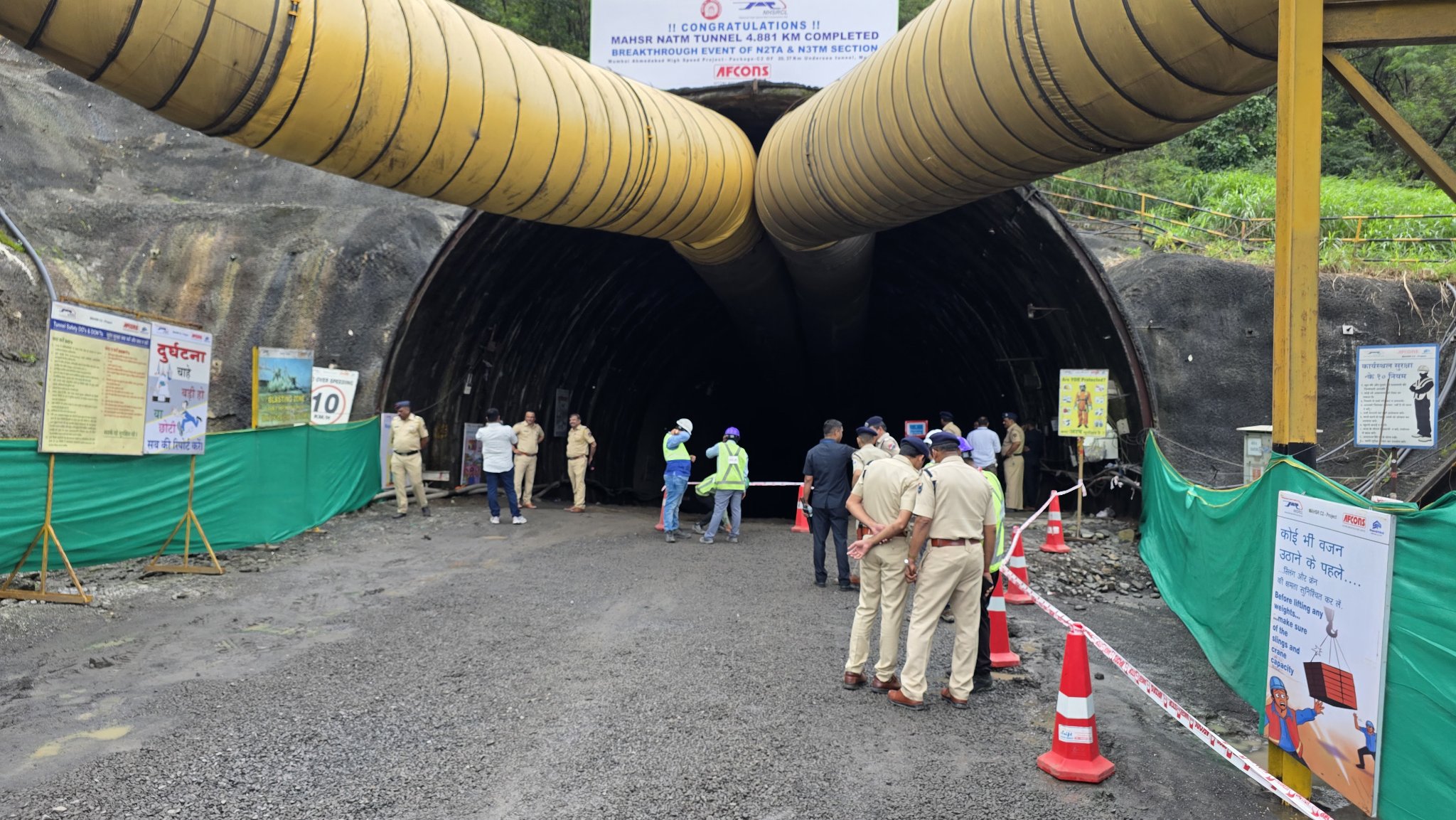Railway Minister Ashwini Vaishnaw on Saturday declared a “landmark achievement” in India’s first bullet train project after the successful breakthrough of a 4.88 km-long tunnel between Shilphata and Ghansoli near Mumbai.
The minister, who pressed the button for a controlled blast to clear the tunnel’s final layer, said the first phase of the Mumbai-Ahmedabad high-speed corridor would open on the Surat-Bilimora section in December 2027. Thane is expected to be connected in 2028, with the Bandra Kurla Complex section becoming operational by 2029.
“The bullet train will be the transport for the middle class, and the fares will be reasonable,” Vaishnaw told reporters. He noted that while Google Maps currently shows a nine-hour journey between Mumbai and Ahmedabad, the new service will cut travel time to just two hours and seven minutes.
He said the services have been planned to ensure frequent departures, with trains every half-hour during peak hours in the initial stages and, eventually, departures every 10 minutes once the network stabilises. Passengers, he added, would not require reservations and could simply arrive at the station and board.
The breakthrough tunnel is part of a 21 km underground stretch between Bandra Kurla Complex (BKC) and Shilphata, including a 7 km section running beneath Thane Creek. Excavated using the New Austrian Tunnel Method (NATM), the tunnel has an internal width of 12.6 metres and is designed as a single-tube structure of 13.1 metres in diameter, accommodating twin tracks for both up and down lines.

Also read: India’s first underground bullet train station takes shape
The National High Speed Rail Corporation Limited (NHSRCL), which is executing the project, said excavation began in May 2024 and was undertaken in three phases. The first breakthrough was achieved on 9 July when a 2.7 km continuous section was completed. An additional intermediate tunnel was constructed to allow simultaneous excavation from both Ghansoli and Shilphata sides.
The NHSRCL added that the tunnel breakthrough connects the Savali shaft to the Shilphata portal, linking it to the viaduct portion of the corridor. The next stage will involve waterproofing, lining, finishing, and the installation of equipment, while the remaining 16 km of tunnelling will be carried out using tunnel boring machines.
Safety systems employed during construction included settlement markers, inclinometers, piezometers, and strain gauges, along with restricted site access and measures to pump fresh air for workers.
The NHSRCL said that substantial progress had already been made on the 508 km corridor, with 321 km of viaduct and 398 km of pier completed. Work also includes 17 river bridges, nine steel bridges, 206 km of noise barriers, and 206 km of track bed construction. Over 2,000 overhead equipment masts have been installed covering 48 km of the mainline viaduct.
The Mumbai-Ahmedabad bullet train corridor remains India’s first and most ambitious high-speed rail project.


